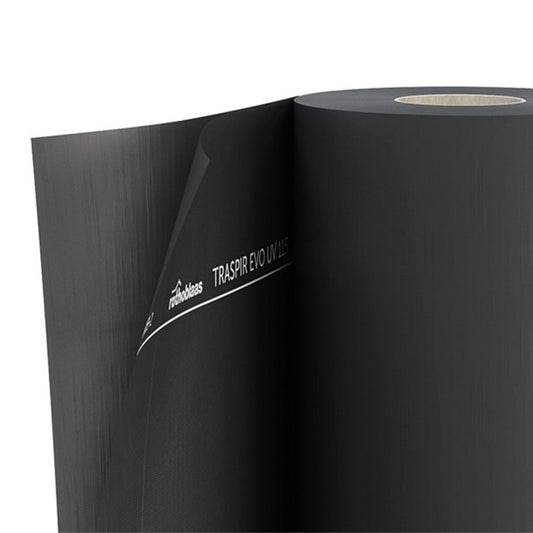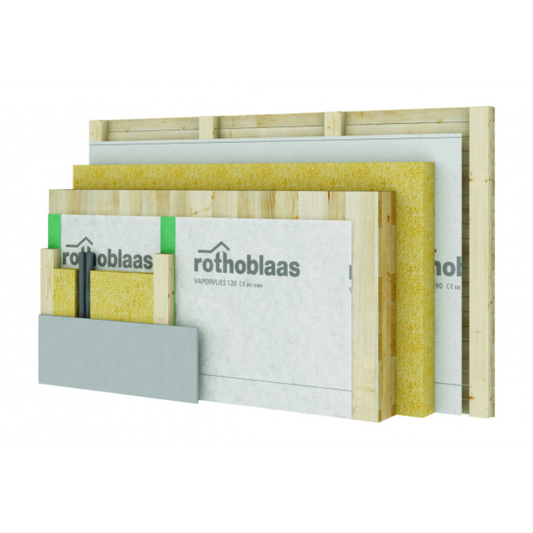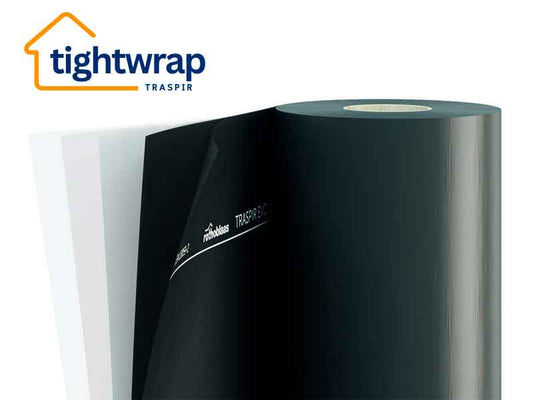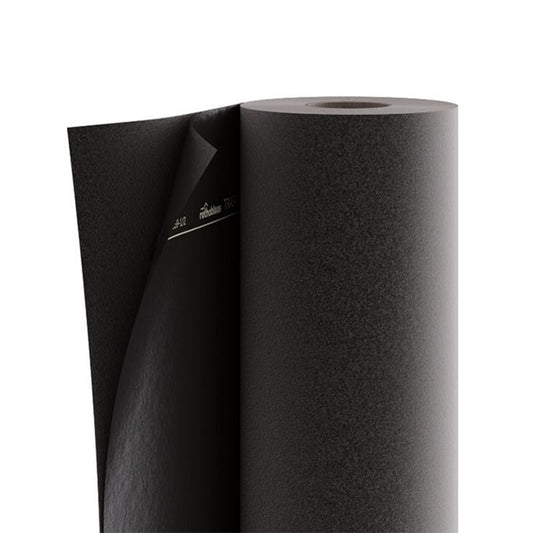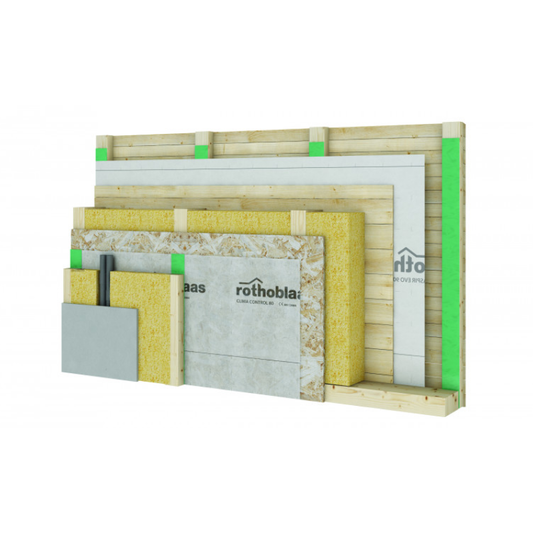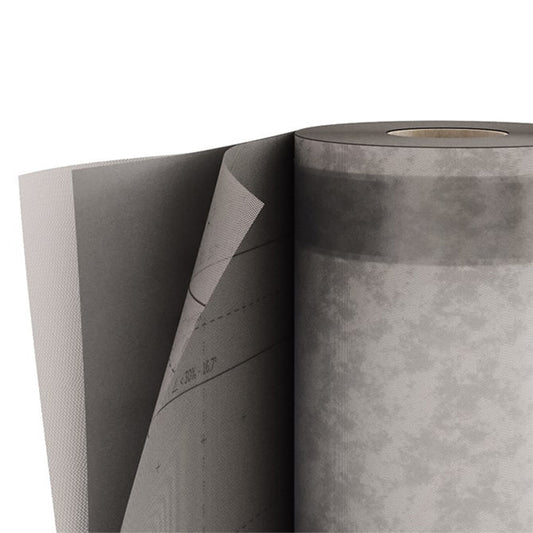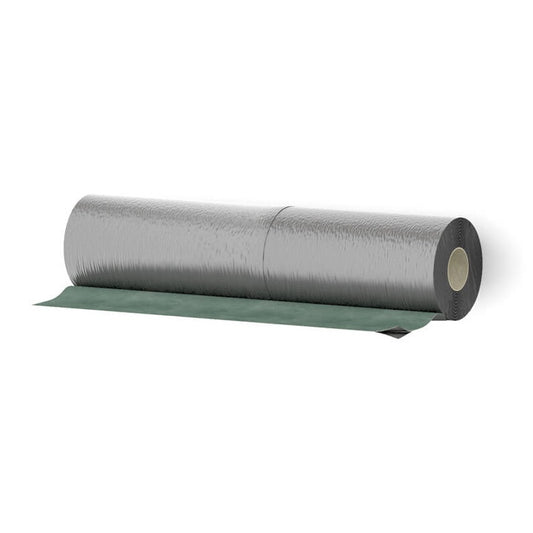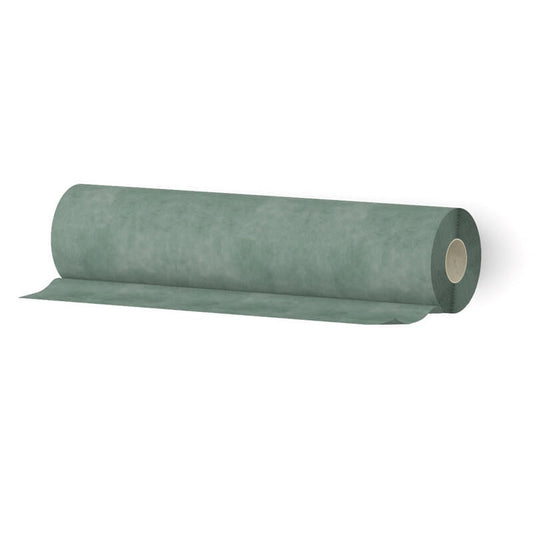
Wall Membranes
High-performance wall membranes for moisture control and protection
Wall membranes play a crucial role in timber construction, offering protection against moisture ingress while allowing for controlled airflow. Whether you need a breathable membrane for walls to manage condensation or a waterproof membrane for walls to provide full moisture resistance, choosing the right solution is essential for the long-term durability of your timber structure.
Timber buildings are naturally vulnerable to moisture, which can lead to damp, mould, and structural degradation if not properly managed. Wall membranes create a barrier that regulates moisture movement, preventing water penetration while allowing the structure to breathe where necessary. By selecting the correct wall membrane, builders can enhance insulation performance, increase the lifespan of the structure, and improve overall building efficiency.
Wall membranes play a crucial role in protecting buildings from moisture, air leaks, and external elements. Our selection ensures enhanced insulation, durability, and performance for every structure. See our range of wall membranes.
-
Traspir Evo UV 210
Regular price £439.71 GBPRegular priceUnit price / per -
Traspir Evo UV 115
Regular price £296.23 GBPRegular priceUnit price / per -
Vaporvlies 120
Regular price From £101.27 GBPRegular priceUnit price / per -
Traspir EVO UV Adhesive 250 'Tightwrap' - External Air Tightness Barrier Membrane
Regular price £723.09 GBPRegular priceUnit price / per -
Traspir Felt Evo UV 210
Regular price £307.80 GBPRegular priceUnit price / per -
Clima Adapt 80
Regular price £177.12 GBPRegular priceUnit price / per -
Traspir Evo 160
Regular price £307.03 GBPRegular priceUnit price / per -
Traspir 150
Regular price From £120.00 GBPRegular priceUnit price / per -
Silent Wall
Regular price £175.06 GBPRegular priceUnit price / per -
Silent Wall Mass Acoustic Membrane
Regular price £77.38 GBPRegular priceUnit price / per
How Do Wall Membranes Work?
Wall membranes serve as protective layers, preventing moisture from infiltrating the timber structure while allowing controlled ventilation. They function in three primary ways:
- Breathable membranes for walls – These allow water vapour to escape from within the structure while preventing external moisture from entering. They are particularly useful in timber-framed buildings where condensation control is vital.
- Waterproof membranes for walls – These provide an impermeable barrier to block water ingress, ideal for areas exposed to high levels of moisture, such as external walls or basement structures.
- Damp proof membranes for walls – Specifically designed to prevent rising or penetrating damp, these membranes are often used in conjunction with other waterproofing solutions.
By regulating moisture movement, wall membranes help to prevent condensation buildup within wall cavities, reducing the risk of damp-related issues and preserving the integrity of the timber framework.
What are the benefits of wall membranes?
Investing in a high-quality wall membrane provides multiple benefits that enhance the performance and longevity of timber buildings:
- Moisture protection - Wall membranes prevent moisture from penetrating the structure, reducing the risk of rot, damp, and mould growth within the walls.
- Condensation control - A breathable membrane for walls allows moisture vapour to escape, preventing trapped condensation that could lead to structural damage over time.
- Improved insulation efficiency - Wall membranes enhance the effectiveness of insulation by reducing air leaks and maintaining a stable thermal environment, making buildings more energy-efficient.
- Enhanced structural longevity - By keeping timber dry and free from excess moisture, wall membranes help extend the lifespan of timber frames, reducing the risk of warping, weakening, and decay.
- Versatile protection - Whether used in external walls, internal partitions, or basements, wall membranes offer adaptable solutions for various construction needs.
What to consider when choosing a wall membrane for your timber structure?
Selecting the right wall membrane depends on various factors, including:
Type of membrane
- Breathable membranes – Ideal for allowing moisture vapour to escape while keeping rain out.
- Waterproof membranes – Necessary for walls exposed to high levels of moisture or extreme weather conditions.
- Damp proof membranes – Best suited for preventing rising or penetrating damp in lower sections of walls.
Climate conditions - Consider the typical humidity levels, rainfall, and seasonal temperature changes in your location to ensure the wall membrane provides suitable protection.
Wall construction type - Different timber wall constructions may require specific membrane properties. Ensure compatibility with insulation, external cladding, and ventilation requirements.
Installation requirements - Proper fitting is crucial to maximise the performance of the wall membrane. Some membranes require specialist tapes, overlaps, or additional fixings to function effectively.
Vapour control vs waterproofing - If you need to allow moisture to escape, a breathable membrane is ideal. If complete moisture resistance is required, a waterproof or damp proof membrane should be selected.
Can you use roofing membrane on walls?
Yes, some roofing membranes can be used on walls, but this depends on the type of membrane and the specific requirements of the structure.
- Breathable roofing membranes – Many modern breathable membranes are suitable for both roofs and walls, as they allow moisture vapour to escape while preventing external water penetration. These are commonly used in timber-frame construction for external wall protection.
- Waterproof roofing membranes – Fully waterproof roofing membranes are generally not suitable for walls, as they do not allow moisture to escape. Trapping moisture inside a wall cavity can lead to condensation buildup and damp-related issues.
When using a roofing membrane on walls, it is essential to ensure proper installation, including correct overlapping, sealing, and ventilation, to maintain effectiveness.
How to fit breathable membranes to walls?
Installing a breathable membrane for walls requires careful application to ensure it provides the intended moisture control and weather protection. The general steps include:
- Prepare the wall surface - Ensure the wall is free from debris and any sharp objects that could damage the membrane.
- Roll out the membrane - Start at the base of the wall and work upwards. Lay the membrane horizontally, ensuring it overlaps at least 100mm at each joint.
- Fix the membrane securely - Attach the membrane to the timber frame using staples, nails, or specialist fixing tape. Ensure a tight, even fit without sagging or loose areas.
- Seal the overlaps - Use appropriate breathable membrane tape to secure the joints and prevent wind-driven rain from penetrating.
- Ensure proper ventilation - Leave necessary gaps or vent openings where required to allow moisture vapour to escape.
- Install external cladding or insulation - Once the membrane is secured, apply external cladding or insulation as per the construction design.
Correct installation of a breathable membrane for walls is essential to maximise performance and prevent unwanted moisture buildup.
What is a breather membrane for walls?
A breather membrane for walls is a protective layer that allows moisture vapour to pass through while preventing liquid water from penetrating. These membranes are widely used in timber-frame construction to regulate moisture levels and reduce the risk of damp-related issues.
Key functions of a breather membrane:
- Prevents rain and external moisture from entering the structure.
- Allows internal moisture vapour to escape, reducing condensation buildup.
- Improves insulation performance by reducing air movement and draughts.
- Enhances the durability of timber walls by keeping them dry and well-ventilated.
Breather membranes are essential for maintaining a healthy and long-lasting timber building, providing an effective balance between moisture control and structural protection.
Wall membranes are a vital component in timber construction, offering moisture protection, breathability, and insulation enhancement. Whether you need a breathable membrane for walls to control condensation, a waterproof membrane for walls for complete moisture resistance, or a damp proof membrane to prevent rising damp, selecting the right solution ensures long-term durability and structural integrity.
By understanding how wall membranes work, their benefits, and how to install them effectively, builders and homeowners can create well-protected, efficient, and long-lasting timber structures.
Timber build advice:
-

How to soundproof a timber house?
Find out how -
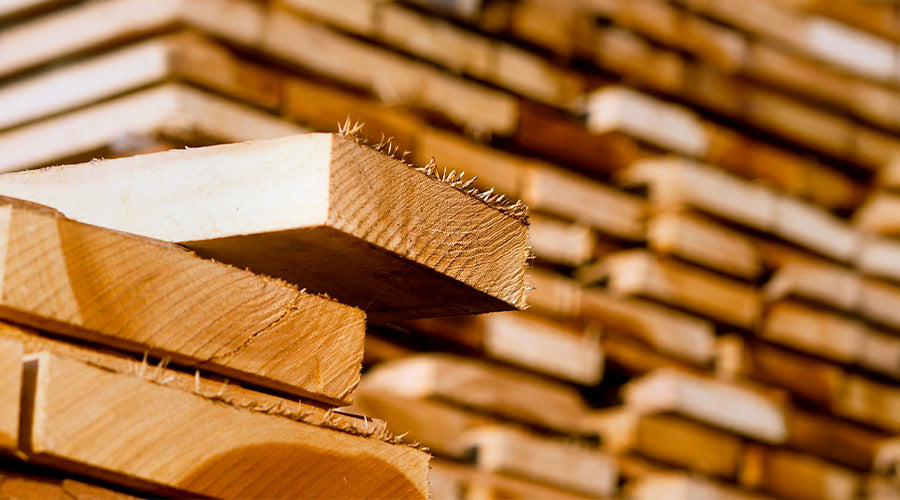
How to connect timber to…..?
Find out how -
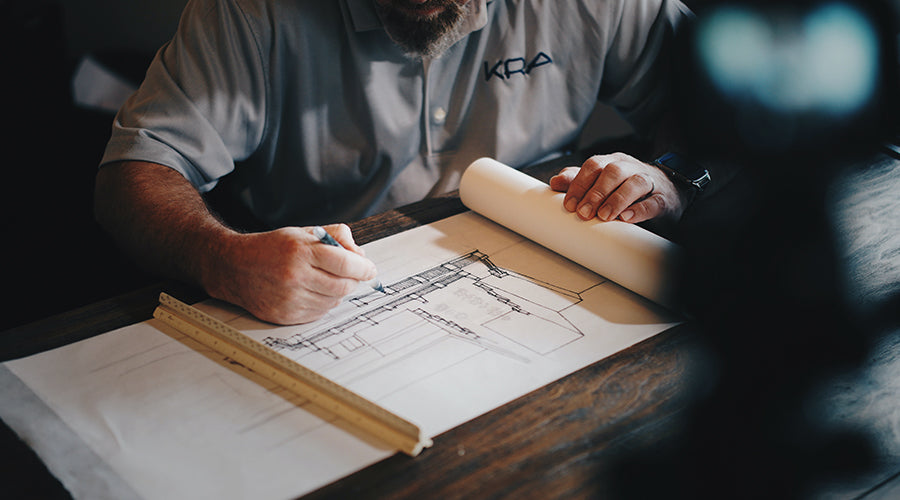
How to fix timber build noise issues?
Find out how
Need advice on your timber project?
Our team of experts are ready to assist you with any questions or guidance you may need for your timber construction. Whenever you're ready to delve deeper into the possibilities, feel free to reach out to us.


